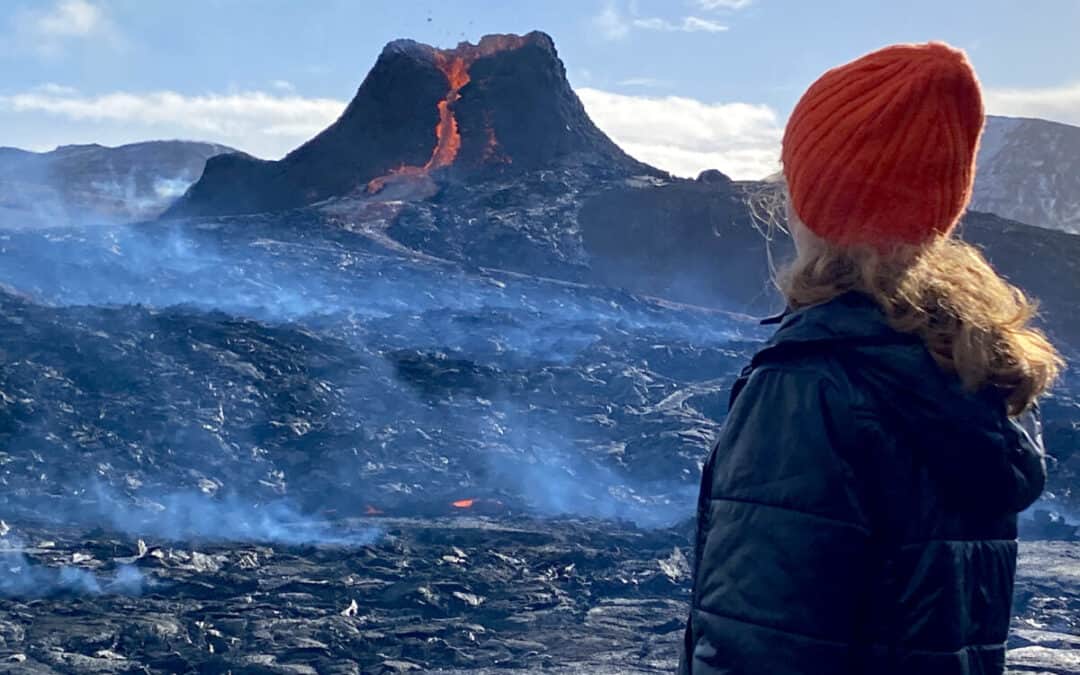WHAT TO WEAR IN ICELAND
In Iceland, the climate is cold, cloudy and windy for most of the year. Iceland is located on high latitudes, close to the Arctic Circle, and can receive cold winds from the Arctic. However, Iceland does not get extreme cold due to the Gulf Stream, a warm ocean current that flows from Florida, along Ireland and Norway and around Iceland, bringing temperate climate along the coast of Iceland. Central Iceland is colder, and in winter the roads are closed to traffic because of snow and weather, and there is more snow in north Iceland than south Iceland in winter.
So, the geological location of Iceland results in quite unstable climate, with sudden changes in weather and temperature, and calm and sunny periods are very rare.
What to wear in Iceland in winter (October – April)
It starts getting cold in Iceland late summer, after summer solstice, with less and less sunlight. Due to the Gulf Stream, winter in Iceland does not get extreme cold, and fluctuates around 0°C (32°F). However, due to the wind it can feel much colder than it is. In April, daytime temperatures are around 6 °C (43 °F) in Reykjavik. Across Iceland, it can snow from October to May; along the northern coasts, sudden snow showers may occur even in June and September, while in inland areas, this can happen even in midsummer because of high altitude and distance from the Gulf Stream. Northerly winds bring cold air masses from the Arctic and can lower the temperatures to around -20 °C (-4 °F) and -30 °C (-22 °F) in central Iceland. However, these cold spells are usually short lived.
We reccommend warm clothes, and also water proof, because it can snow and it can rain in winter. Remember you will be spending a lot of time outdoors in the nature, so please dress warm. Here is a list of clothes that are good to have.
- Base-layer, warm long-sleeved top and bottom.
- Mid-layer, a thick and warm wool or fleece top to go over your base layer.
- Shell jacket, wind and water proof, gore-tex or similar, is mandatory and extremely important in Icelandic climate.
- Warm jacket, warm and thick jacket for the snowy days.
- Wateproof shell pants, gore-tex or similar.
- Gloves, warm gloves.
- Hat, preferably with a windproof lining.
- Scarf, is good to have in the cold wind.
- Boots, good, waterproof hiking boots (no sneakers).
- Rain cover poncho or similar.
- Water bottle, you should not buy water in Iceland. Bring a water bottle, you can fill it anywhere. Iceland has one of the cleanest water in the world.
- Ice Cleats, is good to have to put under your boots to prevent you from slipping on the ice. These can be bought in shops and supermarkets in Iceland.
- Swimsuit, for the Blue Lagoon or the other SPAs and geothermal pools in Iceland.
What to wear in Iceland in summer (May – September)
Summer in Iceland lasts from June to August. End of May and beginning of September can be beautiful and warm, but do not assume warm spring or warm summer in Iceland. We actually reccommend to pack similar clothes for winter and summer. However, you probably do not need the thick winter jacket.
In Iceland the summer is never hot. It is usually windy and chilly. Average summer temperatures is around 10˚C to 14˚C (50-57 degrees Fahrenheit) around the country. It hardly gets above 20°C (68°F) in summer in Iceland. Because of the high latitude, summers days are long and on summer solstice it does not get dark at all during the night. Late August, we are able to see the Aurora borealis again. So, we recommend warm clothes for the aurora hunt.
We reccommend warm clothes, and also water proof. Remember you will be spending a lot of time outdoors in the nature, so please dress warm. Here is a list of clothes that are good to have.
- Base-layer, warm long-sleeved top and bottom.
- Mid-layer, a thick and warm wool or fleece top to go over your base layer.
- Shell jacket, wind and water proof, gore-tex or similar, is mandatory and extremely important in Icelandic climate.
- Wateproof shell pants, gore-tex or similar.
- Gloves, warm gloves.
- Hat, preferably with a windproof lining.
- Boots, good shoes, preferably waterproof.
- Rain cover poncho or similar.
- Water bottle, you should not buy water in Iceland. Bring a water
- bottle, you can fill it anywhere. Iceland has one of the cleanest water in the world.
- Swimsuit, for the Blue Lagoon or the other SPAs and geothermal pools in Iceland.

